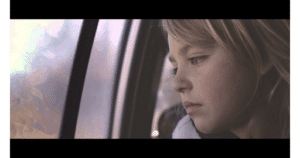
Meme culture. We increasingly live in a society that communicates via symbols: digital emojis express human emotion when we can’t see each other’s faces. A single cartoon image conveys layers of political commentary that used to take a long editorial. The acronym “YOLO” * is so much more efficient – it only uses half the syllables of the old, clunky “Carpe Diem”.
* “YOLO” is an acronym that stands for “You Only Live Once.” It’s often used to justify taking risks or engaging in spontaneous, sometimes impulsive, behavior,….
The symbology of the Cross bypasses so many words. It draws your eye to the center and melts directly over the heart, drenching it in softness. The traditional cross doesn’t show the body of Christ. The body is gone, and what remains is Hope. Faith. Victory over sin and death.
I have been crucified with Christ and I no longer live, but Christ lives in me. The life I now live in the body, I live by faith in the Son of God, who loved me and gave himself for me. Galatians 2:20 NIV
The traditional Crucifix is a different symbol but deeply related. It usually shows Jesus still on the cross, head down, torn and bleeding. It reminds us of the tremendous cost of our redemption. The kind of love He has for us that endures pain and betrayal. It reminds us of the deep and costly commitment to love.
Therefore, since we have been justified through faith, we have peace with God through our Lord Jesus Christ, through whom we have gained access by faith into this grace in which we now stand. And we boast in the hope of the glory of God. Not only so, but we also glory in our sufferings, because we know that suffering produces perseverance; perseverance, character; and character, hope. And hope does not put us to shame, because God’s love has been poured out into our hearts through the Holy Spirit, who has been given to us. Romans 5:1-5 NIV
There was a popular song, maybe ten years ago, and the title always struck me: “Stubborn Love”. The music video depicts a child in a divorce situation, looking at her mother — who is in the process of packing up and leaving her husband or partner. The child sees her mother, in all her imperfections and repeated mistakes.
She’ll lie and steal and cheat
And beg you from her knees
Make you think she means it this time
But her stubborn love for her mother is this line:
She’ll tear a hole in you
The one you can’t repair
But I still love her
I don’t really care
What kind of love is this? It’s hard for me to fathom, because I tend toward human judgment and criticism. This love is in a completely different league: a love that is not related in any way to worthiness. It is love that is sacrificial, costly, and relentless.
When I am confused, when I am frustrated, when I want to cast stones at myself and others, the image of Jesus dying on the cross is the stubborn love that I can trust with all my heart.
by Carie Grant

